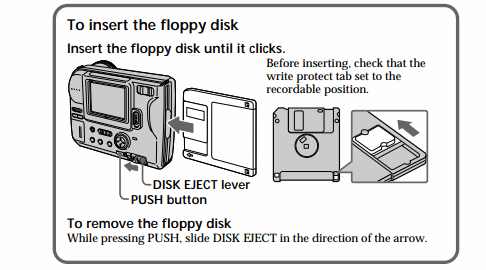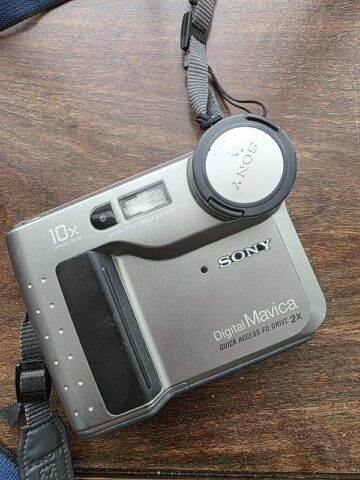Film cameras weren’t dead yet but in 1998 digital cameras were a thing.
Part of the smart design was integration with the Floppy Disc as storage media. Although limited in capacity (~30 pictures), they were mainstream an cheap common place. On the downside, the smallish image sensor state of the art at 1/4″ translated to a photo image resolution of 640 × 480 pixels. To try to adjust for that weakness the camera came with a 10x optical zoom lens, so points there for shot framing.
The meager 0.4-megapixel resolution was quickly outpaced by competitors (Nikon, Canon, Olympus) offering 1–2 megapixels by 1999. Floppy disks, while convenient, had limited capacity (1.44 MB), and slow write times were drawbacks.
The image was captured to system flash memory. The 3.5 inch disc would spin up for the write (save) or read (playback) After saving to the FD the memory would then be available for the next click of the shutter button. Wait time was ~4–5 seconds per photo (0.5–1s for capture/processing plus 3–4s for writing). You would need to press the shutter button for each photo, and the camera would lock out further captures until the floppy disk write was complete.
The digital camera gave instant gratification like a Polaroid vs 24 hr. film processing at the Fotomat. Images could be shared easily. Once you absorbed the cost of ownership, the picture taking was free!
Any photo collection from this this camera is grainy — primitive to the 4k standard. Click for full size glory. But this was a time before high speed bandwidth so… good enough.
The camera’s bulk (1.5 lbs) was balanced by ease of use but soon this model was passé. The quite novel Mavica is in my legacy ‘can not bear to throw it away‘ bin.


